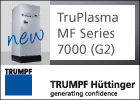Production processes are constantly being optimized. Both time and cost pressure require the constant revision and reorganization of organizational structures in internal logistics, and this is no different in the glass industry. With companies increasing their digital networks, the use of automated guided vehicles will also make it easier to implement these processes.
The magic words are shop floor logistics. People are, and will always be, part of the logistics chain. With the help of automated work steps, employees are able to focus on their tasks more closely and therefore work in a more targeted manner. Mobile and driverless machines are deployed to complete distracting ancillary activities or transport routes, and not just at the cold end of glass production.
The first step is an analysis, a data-based process which requires as much data to be collected as possible, and in as much detail as possible. HEGLA-HANIC GmbH has defined the necessary steps for its production solutions. The decisive issue here is the ongoing production flow. One challenge is the coordination of individual work steps, based on the processing and cycle times of the machines and shop floor logistics. At this juncture, several questions must be posed: What happens at each station and what reduces efficiency? How well is the supply of work materials coordinated? Machine parks are generally designed to be very heterogeneous, certain processes have “grown,” habits have crept in, information is scattered and, of course, there are always unplanned downtimes.
Contrary to expectations
Taking a closer look at processes often shows that they are far more complex than initially thought, despite the fact that they should be simple and efficient. The goal is to determine the ideal state, an analysis process which is more successful the more data the company has collected. Scenarios can be simulated to determine the steps where production needs adapting.
Figure 1: Production processes, from actual state to target state, source: Hegla-Hanic
To do so, affected teams must describe the requirements and the ideal process and then compare both with the actual state. Simulations with the respective production software enables different solutions to be tested, which in turn allows the optimal process to be identified. From this, it becomes apparent which processes must be closely linked and which must be flexible, and how the shop floor logistics of the future must be designed to ensure that all workstations have sufficient material supplies, as well as to ensure that disposal also functions as required. Flexibility is now paramount and has already resulted in high-tech industries, such as the automotive sector and its supplier industries, moving away from the fixed connection of workstations and towards automated guided vehicles (AGVs). This allows the stations to be accessed in a flexible sequence, enabling the producers to react to changing production requirements quickly. Increasing numbers of vehicles are using optical systems to navigate around the shop floor, while simultaneously taking the safety of the workers in their environment into account. The courses of the AGV are fully planned using software and are therefore easy to adapt to any changes in the production processes.
Figure 2: Shop floor logistics requires efficient and flexible solutions. Driverless transport systems will therefore play a significant role in the future. Source: Hegla-Hanic
The use of automated guided vehicles is conceivable in any industry sector and is an excellent addition for the glass industry in particular, with its often free-standing machine parks. The AGVs connect them in any production sequence and are able to transport the frequently heavy loads without any problems. Moreover, they reduce the workload of the employees, who are then better able to concentrate on their tasks at their workstations. In turn, this reduces inactivity and downtimes. As the AGVs also manage the locations of frames and products, long search times and possibly also the reproduction of parts are a thing of the past.
Geopositioning in production facilities
Grenzebach GmbH & Co. KG has devised solutions for these specific applications. The company has developed its own application server as a modular platform on which all digital production processes can be mapped. All devices and machines on the shop floor are connected to the server via adapters, allowing adjustments to be integrated quickly and the results to be analyzed.
The quantity and speed of production require the material flow to be reliable, a step during which automated guided vehicles are often deployed to cover a wide range of tasks. Grenzebach has installed a laser system in the entire driving area which is used to navigate the machines. The environment is mapped using a navigation scanner which detects how light reflects off reflectors installed on the walls at certain distances.
As soon as two or more reflectors are detected, the vehicle is able to accurately determine its current position. Using a triangulation algorithm in the control software, the necessary steering commands are sent to the vehicle. The company also uses a second navigation system, known as a dead reckoning navigation system.
This system is equipped with an odometer and an angle encoder and is installed on the vehicle’s drive wheels, resulting in even more accurate navigation, while a map of the environment is marked with the precise positions of the wall reflectors. An alternative method is to use contour navigation, which does not require an unrestricted view of reflectors, but is performed by the transport system itself using safety scanners.
Still room for improvement
According to Dipl.-Ing. Thomas Albrecht, an expert on automated guided vehicles at the Fraunhofer Institute for Material Flow and Logistics (IML), the topic has been trending across industries for three to four years. Compared to other automation solutions, these systems are the most flexible when it comes to linking production processes. Compared to manually operated forklifts, AGVs are gentler on the transported product and also do not cause accidents. However, as long as people remain in the driving area, the vehicles must be able to perform emergency stops, a process generally associated with abrupt braking.
The share of automated guided vehicles in the floor conveyors product group is currently still in the low single-digit percentage range, exact figures are not (yet) available.



























